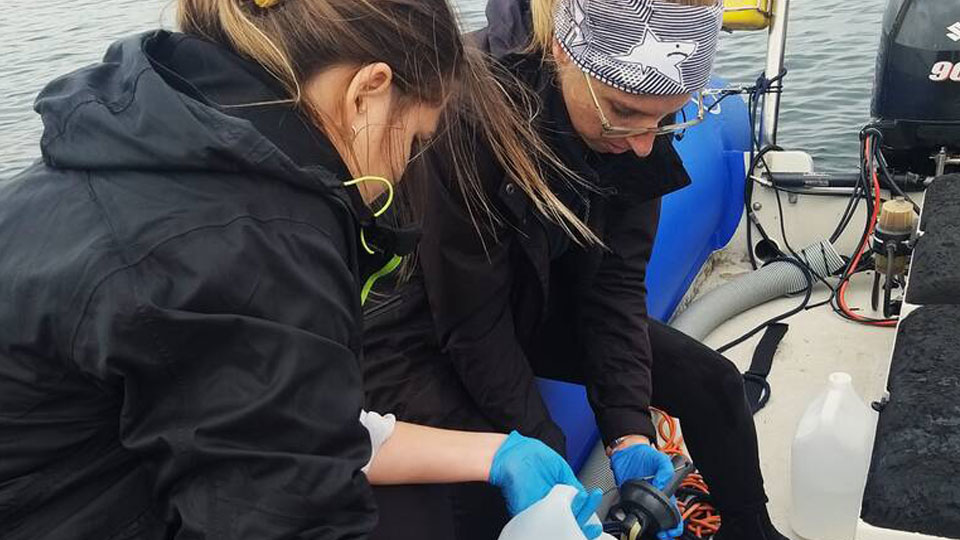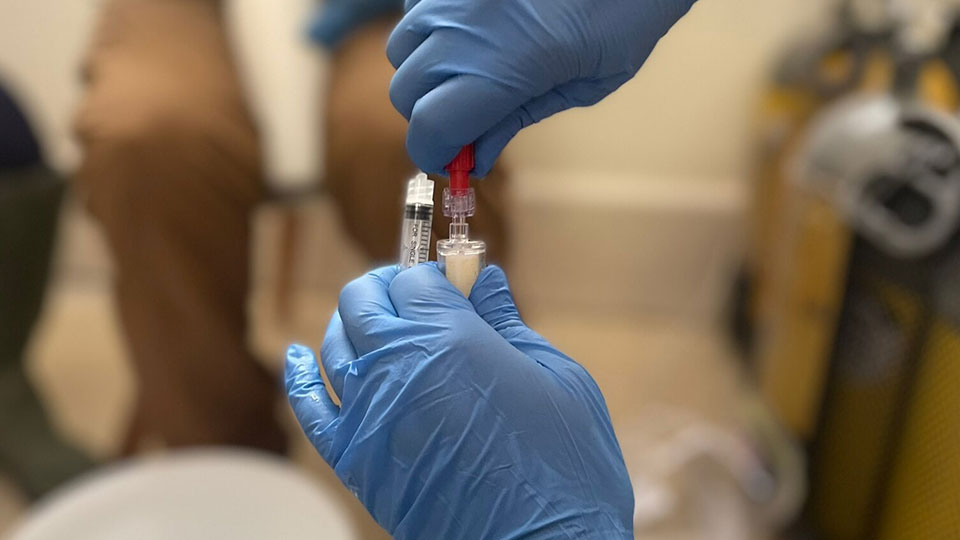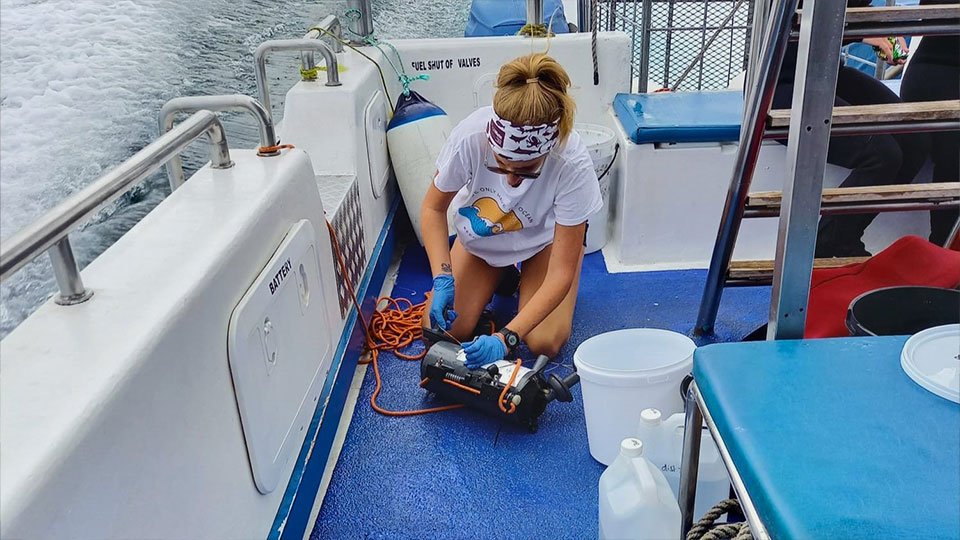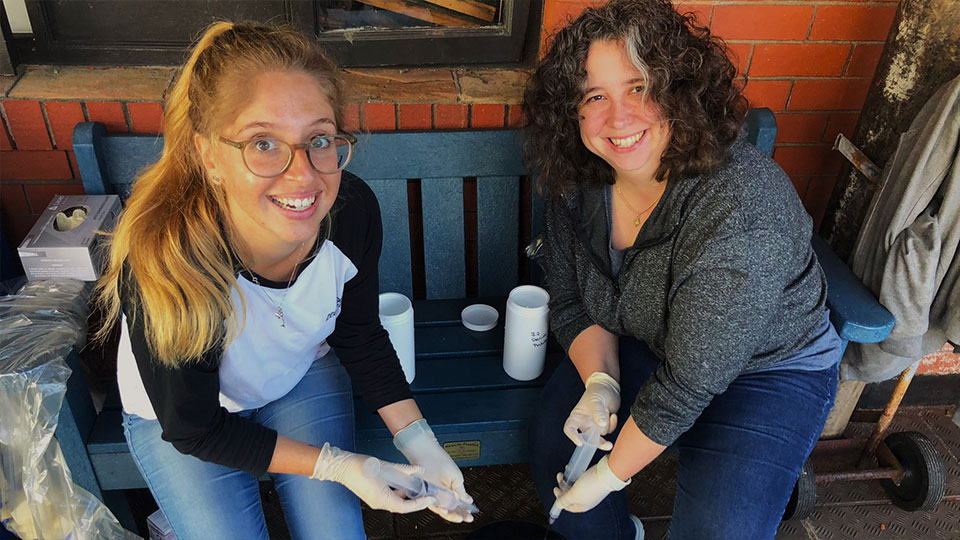Welcome back to the monthly deep-sea doings of the extraordinary Dr Sara Andreotti and her team of ocean conservationists and shark specialists. And to those of you who are dipping a toe in the fascinating waters of Italtile style for the first time, perhaps a short intro is needed to explain why it is that a high-end style icon speaks shark. We believe that our positioning line “Live Beautifully” should encompass a great deal more than deluxe décor and exclusive style. To us, it means the curation of beautiful living that pays mindful attention to our existence on earth and the communities, creatures and plants inhabiting it alongside of us. It’s our LiveGreen journey.
Our LiveGreen ethos also embraces sea life – crucial to keeping life on earth in delicate balance. Italtile partners with Dr Sara Andreotti, the inventor of the SharkSafe Barrier, to support her shark conservation work. And you can help.
Every time you purchase a Tivoli tap, Italtile donates R2 to the SharkWise Project.
SHARKNOTES #8 MARCH 2023 – WHAT IS ENVIRONMENTAL DNA AND HOW CAN IT SAVE SHARKS?
DNA is the biological signature for an organism, which we can use to identify different species, populations and even individuals. eDNA is a brand-new approach to the study of DNA. The ‘e’ stands for ‘environmental’.
So, eDNA is the word which describes the DNA fragments left behind in the environment by any organism from shed skin, saliva or faeces. These DNA fragments are then amplified through polymerase chain reaction (PCR) and sequenced so that we can find which species are present in the area.
It’s a complex and fairly new process invented by Molecular Ecologist Philip Francis Thomsen of Aarhus University in Denmark. It was introduced in the last decade and is continually being developed and refined. In the beginning, microbial DNA was retrieved from soil; then, DNA from amphibians was recovered from freshwater systems, and in 2012, Thomsen’s team was able to find whale DNA in marine water samples.

This cutting-edge technique makes our lives as conservationists easier, because it revolves around the collection of soil and water samples, rather than tissue biopsies. This also makes it a cost-effective method to monitor species in the natural environment. It is non-invasive, which is especially beneficial when researching endangered species. And, since the species does not have to be visually present, the method is very valuable in the detection work around elusive rare species, which may otherwise take months or years. Also, it allows to collect data on many species at once, to provide information on the entire ecosystem.
Of course, eDNA also comes with some limitations. We can’t confirm anything about the size or sex of the individuals of a species recovered, or about the number of individuals present. However, the methodology is still new and there is an ongoing optimisation process, which may lead to ways of solving these problems in the future.

How can we use eDNA to save sharks?
With 111 recorded shark species, the South African coastline is among the top five global hot spots for elasmobranch biodiversity (sharks, rays and skates) and is considered a Living Laboratory for assessing the effect and impact of rapidly occurring climate changes. From the small endemic Puffadder Shyshark (Haploblepharus edwardsii), also known as the Happy Eddie catshark, to the iconic Great White Shark (Carcharodon carcharias), all species have their value in the respective ecosystems, keeping the delicate equilibrium and thereby supporting the allover health of the ocean.
Sadly, globally, sharks and rays have been ranked at a considerably greater risk of extinction than most other vertebrate groups. In the first global assessment by the International Union for Conservation of Nature (IUCN) in 2014, it was shown that 25% of sharks were threatened with extinction, which includes species listed as vulnerable, endangered or critically endangered. This alarming news makes it all the more essential for us to use affordable, non-invasive monitoring techniques.
To date, eDNA hasn’t been used in South Africa to specifically assess shark species diversity. But, with the support from Italtile, The Rufford Grant, Stellenbosch University Science Faculty and the Swiss Hai-stiftung, we aim to provide the baseline for the application of this cutting-edge technique for efficient shark monitoring.
We started by collecting water samples from the Two Oceans Aquarium, to test our methodology and the successful amplification of shark DNA. Since the shark species and number of individuals in the tanks is known to us, the samples can be seen as a baseline to confirm that eDNA technique can be used to show the presence of sharks.

To analyse the shark species’ presence around the coast, we are in the process of collecting water samples around the coastline at known shark hotspots as well as areas with currently reported low shark species diversity. The collection of water samples around the shore is supported by the many dive centres and private individuals keen to help, including: The SharkWise Project Marine Internship, CLS Lwandle, Cape Town Dive Team, Oceans Research, White Shark Diving Company, the Shark & Marine Research Institute, SeaSearch, Raggy Charters, African Watersports, Barry Skinstad and Anthony Mederer.
The use of eDNA will help estimate the presence of species-specific shark DNA in the water samples. It will help us to discern shifts in the distribution of shark species, as well as recover possible overlap with implemented or planned marine protected areas (MPAs). The investigation of current shark species diversity and distribution in South Africa will be the key for the implementation of evidence-based management.

By streamlining the best eDNA protocols for national and international implementation of this novel technique for sharks, we hope to ultimately support the long-term conservation efforts for South African sharks and marine biodiversity.
One of Dr Andreotti’s passions, in her work with the fragile shark populations off the coastline of southern Africa, is the creation of harmony between humans and ‘the shepherds of the ocean’. Read more about her extraordinary SharkSafe Barrier.










































Validate your login